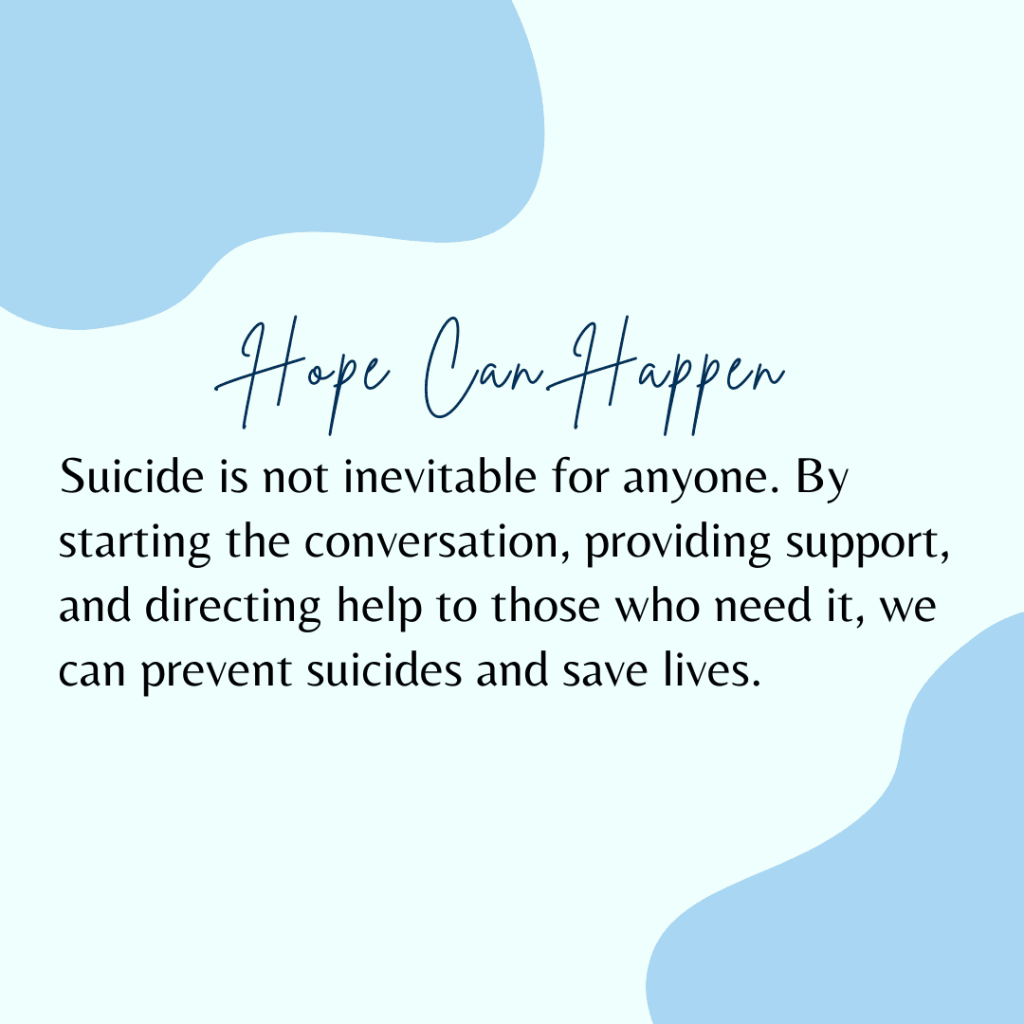Suicide Prevention Resources
Definitions:
- Suicidal ideation = refers to thinking about, considering, or planning suicide
- Suicide attempt = non-fatal, self-directed, potentially injurious behavior with intent to die
- Suicide = death caused by self-directed injurious behavior with intent to die
Risk Factors for Youth Suicide:
- Mental Illness such as Depression, Anxiety, Bipolar, and Conduct Disorder
- Social isolation and interpersonal difficulties
- Disruption to the family, divorce, deportation
- Loss and Grief
- Poor Coping Skills
- Cognitive Deficits
- Exposure to abuse (physical, mental, sexual), domestic violence
- Involvement in the legal and/or foster system
Warning Signs of Suicide:
- Suicidal ideology: talking, texting, writing, drawing about death and suicide
- Looking for ways to kill self, practicing
- Fall in school performance
- Severe worry or anxiety, school refusal
- Marked changes in sleeping, eating habits, and/or physical complaints
- Alcohol and/or drug use
- Withdrawal from friends and/or family
- Dramatic mood changes, rage, uncontrolled anger
- Risk-taking behavior
- Feelings of hopelessness
- Bullying and cyber-bullying
What Can Parents Do?
- Know the warning signs and risk factors
- Talk to your child about depression and suicide
- Be willing to listen to their concerns and take all concerns seriously
- Teach your child to tell a trusted adult if they or another child show signs of suicide
- Support school suicide prevention efforts such as Riding the Waves and Signs of Suicide (SOS)
- If there is reason to be concerned, tell your school social worker, psychologist, counselor, nurse, and/or pediatrician
Additional Resources for Parents/Students:
